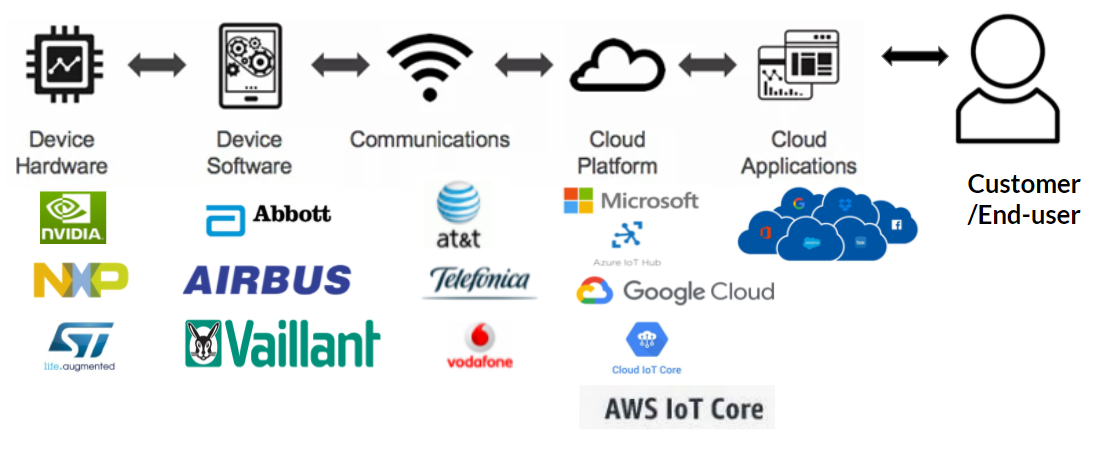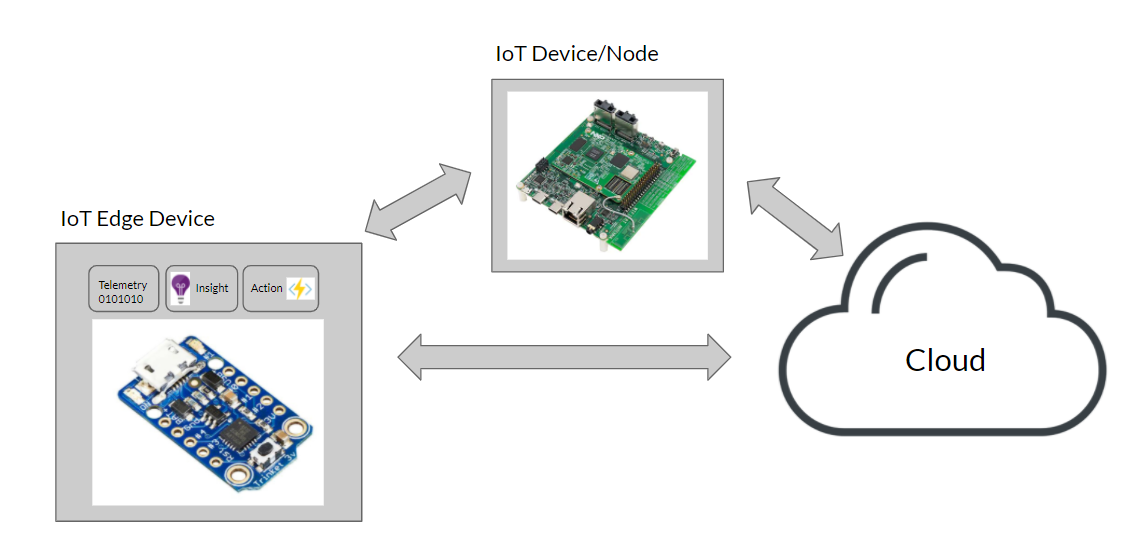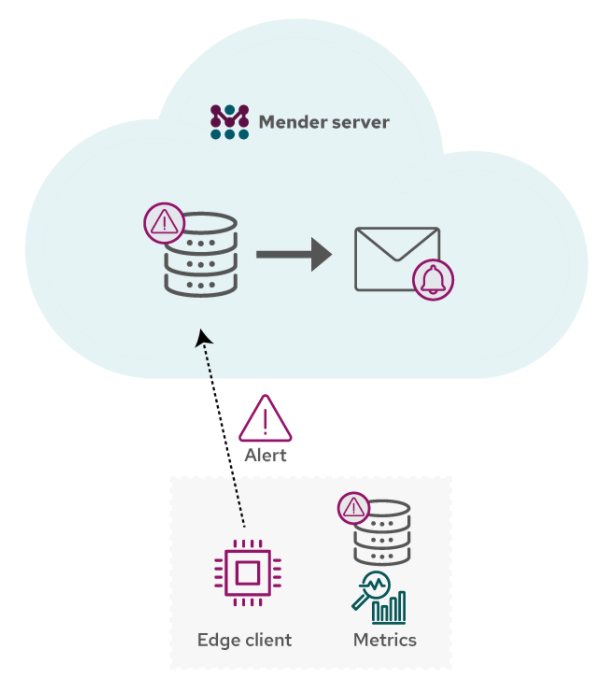Edge Monitoring and IoT - What is the Difference?

Internet-of-Things or commonly known as IoT is another tech buzzword that many use in everyday language. IoT is a complex and fragmented industry with many interpretations of what it can do, largely driven by a company’s strategy and position in the market space and their view of the world. The common denominator is that IoT should improve companies' bottom line and provide value by improving their customers’ experience. Companies see this as the 'next big’ opportunity to their world ‘domination’ however there are many pieces that will have to be figured out. A typical IoT product requires competencies from different fields in hardware, software, connectivity, networking, and cloud. Getting all the needed resources under one roof to launch an IoT product is a challenging endeavor for companies because for the most part these different pieces of the puzzle do not align with the company's core product and business logic. For a company to invest in the different parts of the IoT ecosystem by building homegrown solutions will not make much business sense. Therefore, as a result many have to turn to outside experts to help them achieve their goals. A Mckinsey & Company research report states:
“The preferences of IoT leaders suggest a greater willingness to draw capabilities from an ecosystem of technology partners, rather than rely on homegrown capabilities.”
Source: Mckinsey & Company, “What separates leaders from laggards in the Internet-of-Things”
What is an IoT device?
At its most basic definition, anything that is connected to the internet can be considered an IoT device or simply connected device. However, achieving a specific product objective that provides valuable outcomes for the end user needs to take a more comprehensive approach. The underlying IoT ‘stack’ that would get a product online and provide some end-user interactivity is shown in the figure below.

Each company in each layer of the ‘stack’ aims to solve a specific problem for their customers adding to the diversity and fragmentation of IoT solutions.
For the most part, these concerns in IoT have to do with the industry being in its ‘gold rush’ phase where in every marketplace vendors are rapidly pursuing to develop and distribute the next ‘big thing’ before competitors do, and customers not caring or understanding these issues. Under such a competitive business environment, functionality becomes the main focus and everything else takes a back seat.
What is an IoT edge device?
Another buzzword that many use in everyday IoT language is ‘IoT edge devices’, or ‘edge device’. Another is ‘edge computing’ which are the software algorithms used to process the data on these devices.
The difference between an IoT edge device and an IoT device can vary depending on the purpose and use case(s) of the device. For most use cases, an edge device is an architecture with low cost and low power requirements. These architectures come in the form of small boards with micro-controllers (MCUs) running real-time operating systems (RTOS) with sensors attached to them to measure certain parameters (e.g. temperature). Comparably, an IoT device acting as a central processing (node) is built on a fully integrated embedded hardware with application processors (System-on-Chips) and running operating systems such as Linux. An edge device is usually attached to the central hub or sometimes referred to as a node. A typical IoT edge device topography is shown in the figure below.

For enterprises with large scale IoT deployments, edge devices have surfaced as an effective way of measuring and processing data closest to the source (near data-generating devices). This has the benefit of reducing bandwidth costs, data latency from device-to-cloud, addressing security and privacy concerns. Emergency responses through alert notifications can also be dealt with faster if the detection workloads are processed at the edge.
As edge devices become pervasive on the IoT landscape, the diversity and distribution of connected devices is mounting. Software for edge devices require continuous updating to ensure the devices are secure, functional as intended by design and stream the correct data back to the cloud for storage and processing. Use cases at the edge can vary such as monitoring particular applications for predictive maintenance of manufacturing production lines or remote monitoring of assets in the oil and gas industry where failures can be disastrous. These use cases could have high workloads for measuring, processing and transferring data to the cloud.
Edge monitoring with Mender
Connectivity is one of the key challenges in IoT. As the devices grow exponentially, bandwidth-intensive IoT applications (e.g. video streaming) will struggle for network capacity on the traditional IT client-server architecture. That’s because it uses a centralized server to authenticate and direct traffic on networks. As more devices are connected to the networks, they will struggle to bear the load. Therefore, it is important for companies to consider solutions such as edge processing.
The goal of the Mender Monitor add-on package is to detect and analyze health issues of devices, services and applications. Unlike the traditional monitoring tools relying on the IT client-server architecture, Mender’s Monitoring solution is built for IoT devices and uses edge processing. It is designed for intermittent connectivity and uses close to zero bandwidth.
This is achieved by moving the Alert logic and configuration from the server to the edge device (see image).

Instead of continuous data transfer from devices at all times, the devices will only send alerts that have triggered. This reduces bandwidth usage and enables quick responses to environmental changes locally on the device. For example, if there is an abnormal behavior detected that is out of a specific device threshold (e.g temperature), the device will shut down or reboot immediately instead of sending an alert to a server and hope for some actions to take place!
Conclusion
Building and launching an IoT product is a complex endeavor and needs to consider several layers of engineered solutions. Companies need to rely on outside experts to help them achieve their goals and meet the challenges that arise in building a connected product. IoT devices can take many forms with a common application at the edge. Some key goals for edge devices is to reduce bandwidth and data latency but the current traditional IT server-cloud infrastructure is very heavy on server processing with the client continuously sending data to the server. Mender Monitor aims to solve this problem by taking the alert processing on the device at the edge hence reducing bandwidth usage and quicker responses to changes detected locally on the device.
Recent articles
Failed lifecycle management is unacceptable in FDA and MDR compliance
The struggle to reach global markets for medical device manufacturers: The importance of international compliance
The differences between the US FDA’s device approval process and the EU’s medical device regulation (MDR): An essential dual-compliance framework for global manufacturers
Learn why leading companies choose Mender
Discover how Mender empowers both you and your customers with secure and reliable over-the-air updates for IoT devices. Focus on your product, and benefit from specialized OTA expertise and best practices.



